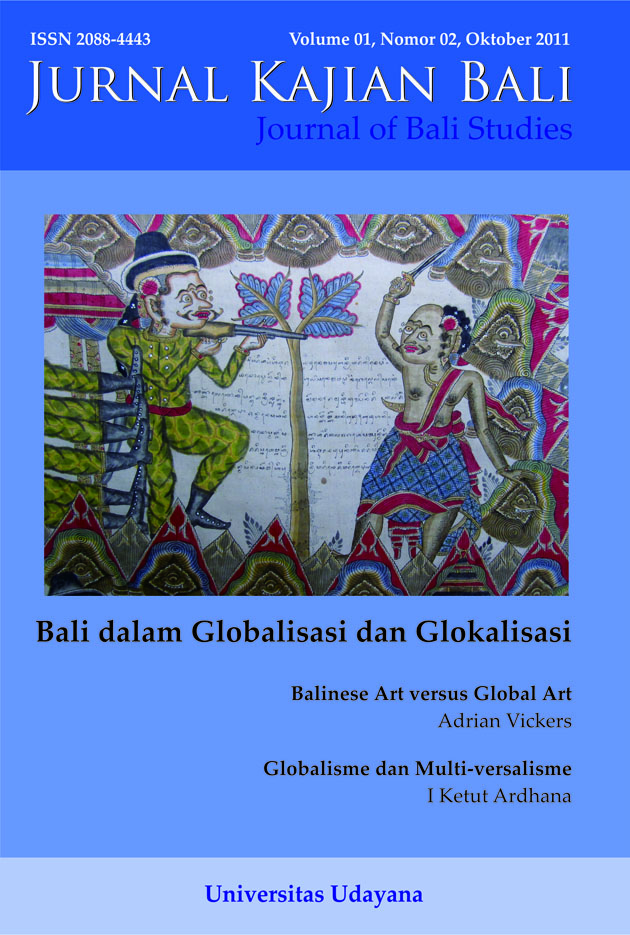’Sarad-Jatah’: Representasi Sosio-Religius pada Budaya Pangan di Bali
Abstract
Abstract
Sarad and jatah are offerings presented during big temple ceremonies(odalan), when the gods come down for visits. One of the favorite daysfor such ceremonies falls on the full moon of the 10th month of theBalinese lunar-solar (Saka) calendar. The sarad and jatah offerings arevisual representations of the world in its Hindu-Balinese version. Thisrepresentation follows the depiction of the world given in the story of theChurning of the Milky Sea (Mandara Giri) such as told in the Old-Javanesetext Adiparwa. The sarad and jatah represent the dialectics of the positiveand the negative found in Hinduismm (rwa bhinneda), but their verticalstructure symbolizes the symbolic tripartition (Tri Loka) of the worldinto Bhur Loka, Bhwah Loka and Swah Loka. This article is based on on thespot observation and in-depth interviews held at the three locations oftemples: Besakih, Ulun Batur and Taro. Apart from a study of meaningof the two offerings, this article expounds the physical (food) and socialprocessses involved in their making. From the point of view of the writer,who is a non-Balinese, this study of sarad and jatah is also a means ofher own character-building in the nation-building context of multi-ethnicIndonesia.
Downloads
Keywords

This work is licensed under a Creative Commons Attribution 4.0 International License.



















